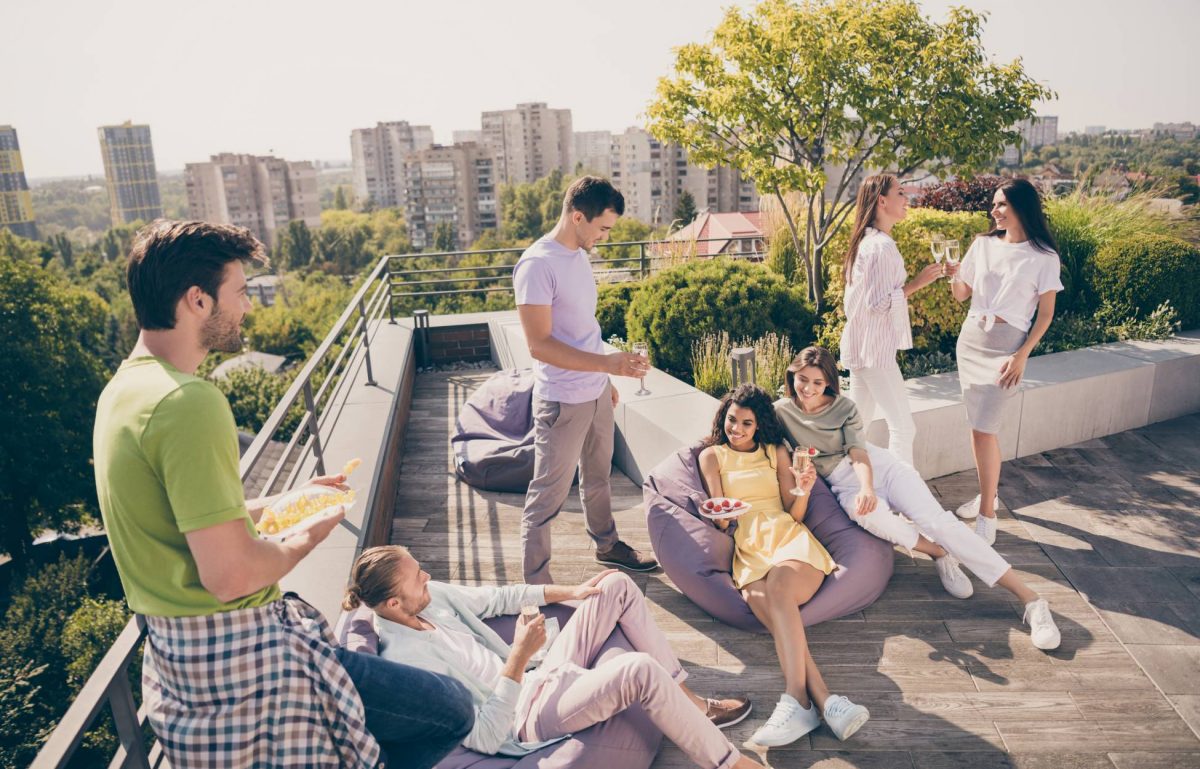Many urban buildings, commercial or residential, are utilizing their rooftop space and transforming them into rooftop terraces. These spaces offer a private outdoor retreat and significantly add value to properties. This post will provide design ideas to enhance your client’s rooftop terrace.
Essential Elements
Creating a rooftop terrace involves more than just placing furniture on a flat roof. It requires careful consideration of aesthetics, functionality, and sustainability. A visually appealing terrace should blend with the building’s architectural style while offering a harmonious environment. Functionality ensures that the space is practical for your client’s needs, whether for leisure, gardening, or social events. Sustainability focuses on using eco-friendly materials and practices to reduce the environmental impact of the terrace.
Aesthetics
Aesthetics play a crucial role in the appeal of a rooftop terrace. A thoughtful selection of materials, colors, and textures can create a visually stunning space. High-performance materials, such as weather-resistant decking and woven metal fabric, ensure longevity and low maintenance. Incorporating elements like planters, pergolas, and water features can enhance the overall look and feel of the terrace, making it an inviting area for your clients to enjoy.
Functionality
Functionality is key to a successful rooftop terrace design. The layout should cater to your client’s lifestyle and preferences. Consider dividing the space into zones for different activities, such as dining, lounging, and gardening. Adequate storage solutions, comfortable seating, and shelter from the elements are essential to make the terrace usable throughout the year.
Sustainable Practices
Sustainability is important in modern architecture. When designing a rooftop terrace, prioritize eco-friendly materials and practices. This prioritization includes using recycled or sustainable materials for decking and furniture, installing energy-efficient lighting, and incorporating plants that require minimal water and maintenance. Green roofs and solar panels are excellent additions that enhance sustainability and reduce energy costs for your clients.
Creative Design Ideas
Innovative design ideas can transform a rooftop terrace into a breathtaking retreat. Incorporating greenery, such as potted plants, vertical gardens, or even small trees, brings life to the space.
Lighting is another critical element; consider using string lights, lanterns, or LED strips to create a warm and inviting atmosphere. Use high-quality furniture and decor to ensure your design’s aesthetic appeal and durability. Features like fire pits, outdoor kitchens, or lounges can make the terrace versatile for various activities.
Rooftop Terraces Benefits
A well-designed rooftop terrace offers numerous benefits. It provides a private outdoor space that enhances the quality of life for your clients. It can increase property value and appeal, making it a wise investment. Plus, sustainable design practices contribute to environmental conservation and can reduce energy costs.
Incorporating unique design ideas into your client’s rooftop terrace can significantly enhance their living experience. You can create a stunning and practical outdoor retreat by focusing on aesthetics, functionality, and sustainability.













